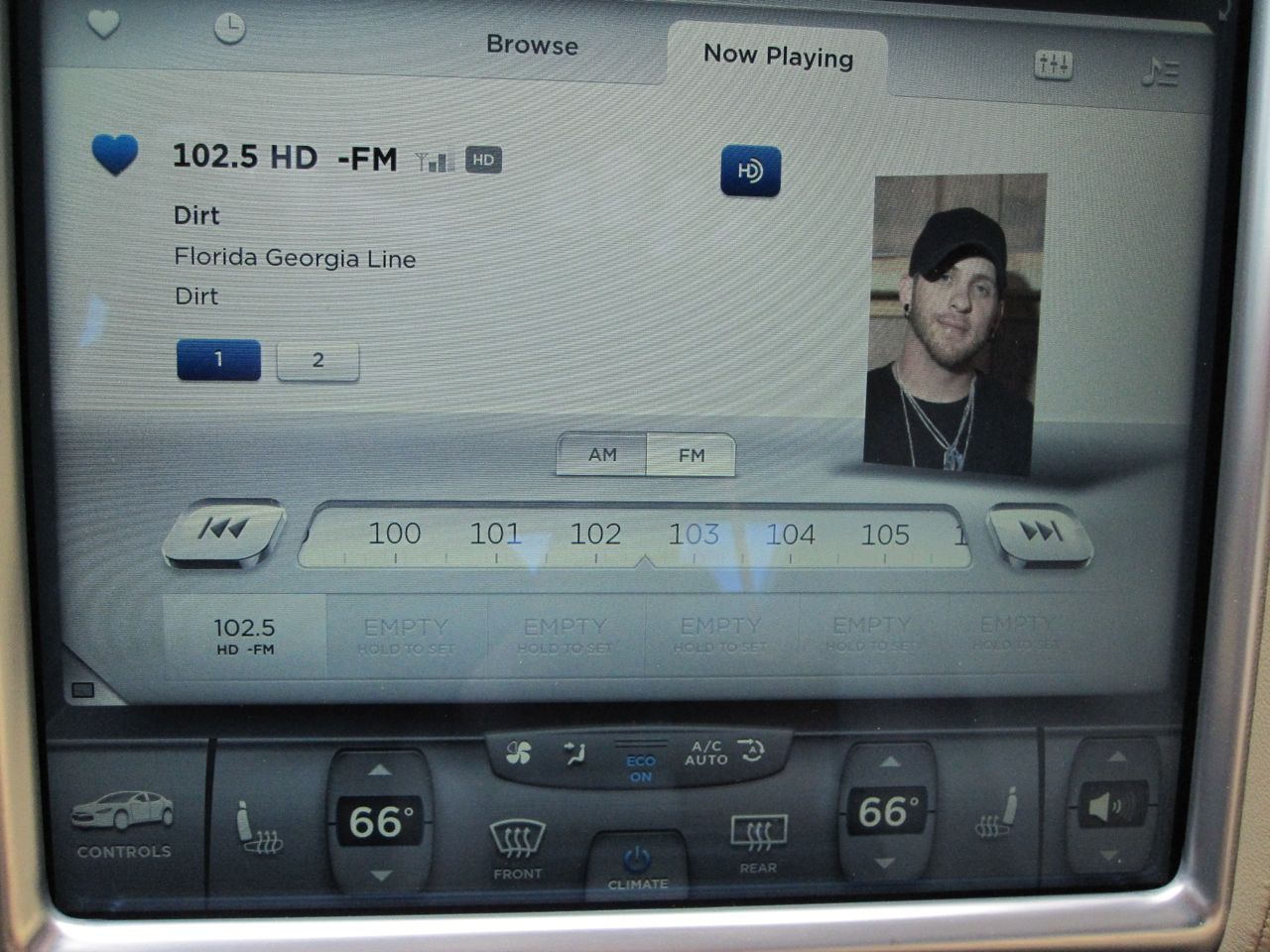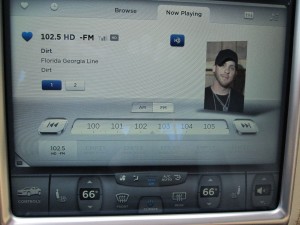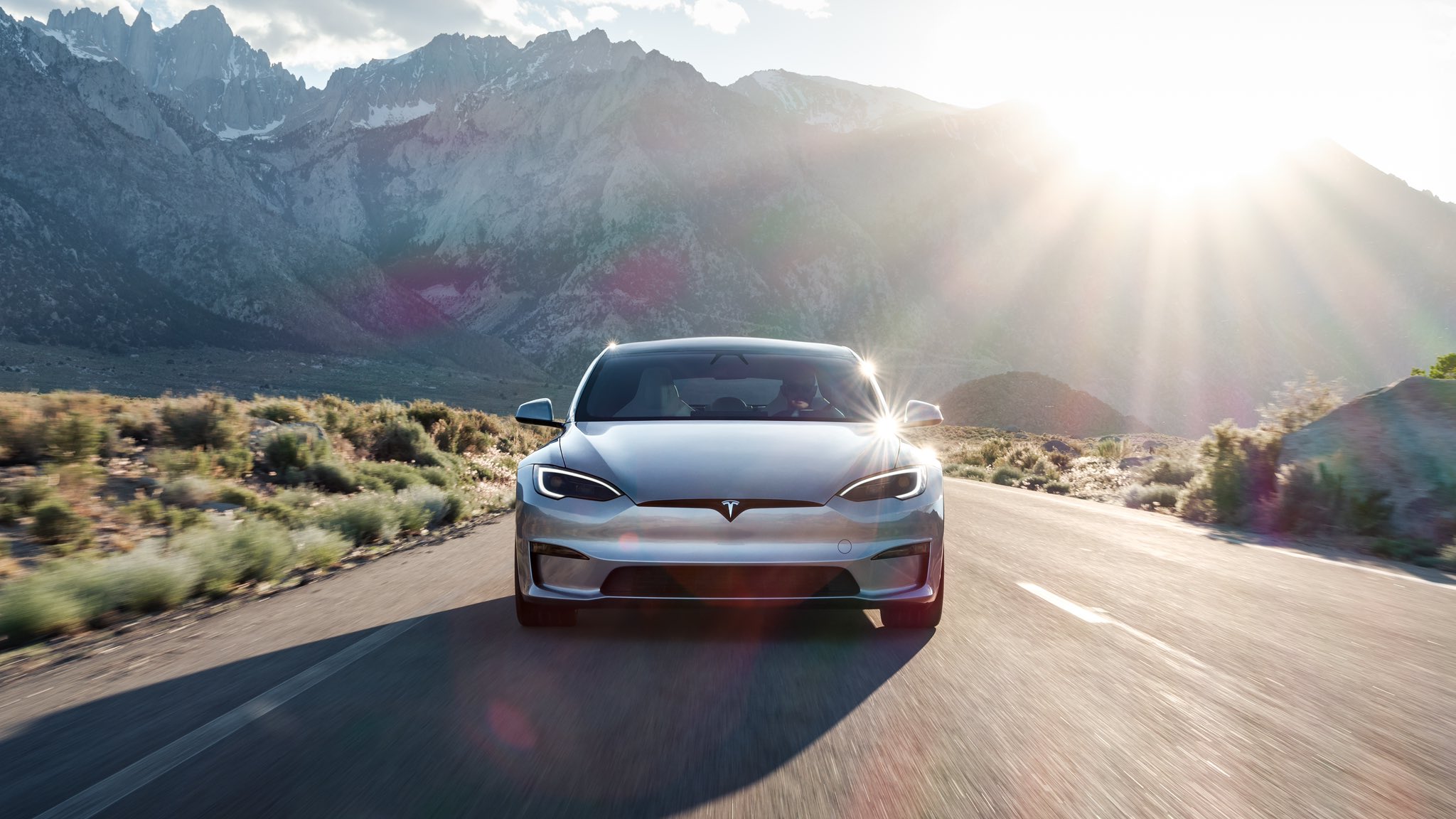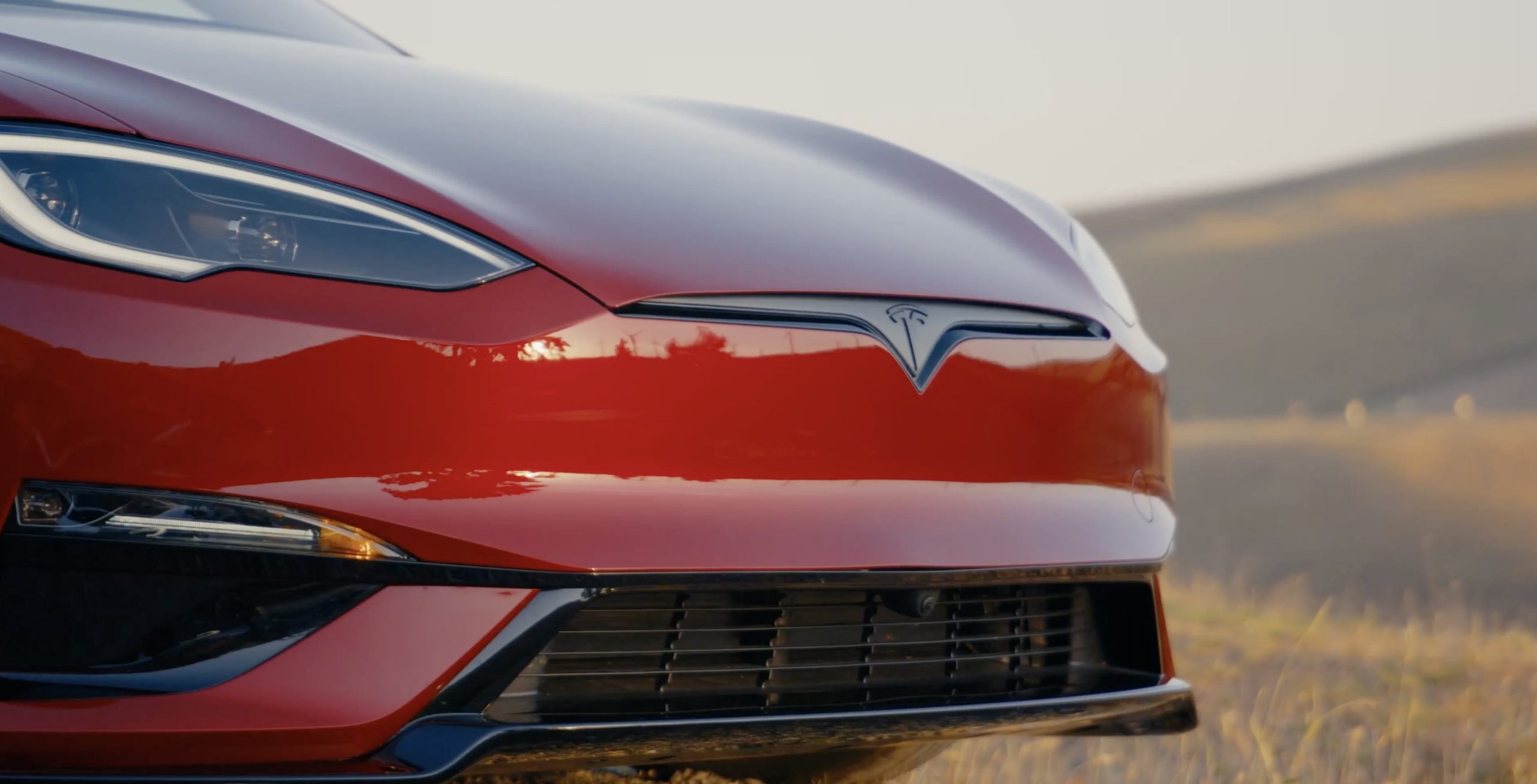Tesla Model S
Dialing through AM/FM Radio on the Tesla Model S Touchscreen

I’ve never been a huge fan of radio or TV because I just can’t stand the ads. That’s one of the big reasons why I found the Slacker internet music offering on the Model S to be so therapeutic – no ads along with the ability to rank, skip or pause songs as desired.
AM/FM Radio Controls
 Tesla has done a really nice job on building an interface to AM and FM radio in the Model S. With the radio interface, you get a standard tuning dial that allows you to change bands through a simple swipe of your finger. The seek right and left buttons search for stations with good signals and like many cars you can press to save a favorite station.
Tesla has done a really nice job on building an interface to AM and FM radio in the Model S. With the radio interface, you get a standard tuning dial that allows you to change bands through a simple swipe of your finger. The seek right and left buttons search for stations with good signals and like many cars you can press to save a favorite station.
The Model S supports both “standard” and HD radio which embeds a digital signal in the AM or FM bands that provides some extra information for each song. HD radio allows stations to offer multiple formats and programs on the same frequency. As seen in this photo I’m tuned into FM 102.5, but I have two stations that can be picked from, each playing something different although broadcasted on the same channel. From what I’ve read you can have up to three full HD channels on the same frequency. The other advantage that HD radio provides over standard radio is the ability to send digital song data such as album art.
The user interface appeared to be the same for AM and FM. Overall the interface was clean, friendly and super-intuitive.
AM/FM Reception
Other than the HD version which was new for me, these are the same radio stations you listen to anywhere, and they have the same age-old location and reception issues.
While I live in New England in a pretty populated area of the country, broadcast signals are spotty at times. AM is particularly bad in most places and even popular FM stations can be hit or miss. In my experience the Model S is worse at radio reception than other cars I’ve previously owned, most notably for AM radio. I had a slight buzz in the best AM stations on acceleration and a loud buzz in regen-assisted deceleration on the AM stations. This was pronounced enough that I added it to my list to have Tesla Service look into next time I have the car in, but I strongly suspect this is a design, not implementation issue.
ALSO SEE: Playing Music from a USB Drive in the Tesla Model S
For FM, I had no interference from acceleration or deceleration but there were very noticeable constant switch overs between HD and “standard” radio. That was annoying enough that I had to completely turn off the HD stream. For those not familiar with HD radio, these cut-overs and cut-backs only work on the primary stream. For instance if i’m listening to 102.5 #2 and the reception cuts out I get nothing. It can only fall back to standard radio when i’m listening to the #1 HD station.
Still Radio
This may be obvious, but this is still radio. You’re inundated with ads, radio station ID notices, commentary from the DJs, etc. For some, that’s added company and entertainment, but for others it’s understood to be a necessary evil before getting to the music. In the new age of Pandora, Slacker and huge digital music libraries it’s really difficult to go back to regular radio. The reception issues are not specific to Tesla but the nature of standard AM/FM radio. When was the last time you watched TV that came in over an antenna?
Fortunately for those that want the commentary, talk shows and the like, there’s an alternative on the Model S by the name of TuneIn radio which I’ll cover in an upcoming post.

News
Tesla Model S makes TIME’s list of Best Inventions

Tesla’s flagship sedan, the Model S, has officially been named one of TIME Magazine’s Best Inventions of the 2000s. It joins its sibling, the Model 3, which made the list in 2017.
The Model S is among the most crucial developments in the automotive industry in the last century.
Just as the Ford Model T made its mark on passenger transportation, becoming the first combustion engine vehicle to be successfully developed and marketed at a time when horse and buggy were the preferred mode of transportation, the Model S revolutionized things a step further.
Although it was not the first EV to be developed, the Tesla Model S was the EV that put EVs on the map. In 2012, TIME recognized the Model S as a piece of technology that could truly transform the car industry.
The publication wrote:
“This electric four-door sedan has the lines of a Jaguar, the ability to zip for 265 miles (426 km) on one charge—that’s the equivalent of 89 m.p.g. (2.6 L/100 km)—and touchscreen controls for everything from GPS navigation to adjusting the suspension.”
Looking back, TIME was right on. The Tesla Model S was truly a marvel for its time, and it, along with the OG 2008 Roadster, can be seen as the first two EVs to push electrification to the mainstream.
As TIME described this year, the Model S “proved to be a game-changing experience for electric vehicles,” and it ended up truly catalyzing things for not only the industry, but Tesla as well.
The Model S acted as a fundraiser of sorts for future vehicles, just as the Model X did. They paved the way for the Model 3 and Model Y to be developed and offered by Tesla at a price point that was more acceptable and accessible to the masses.
The Current State of the Tesla Model S
The Model S contributes to a very small percentage of Tesla sales. The company groups the Model S with the Model X and Cybertruck in its quarterly releases.
Last year, that grouping sold 85,133 total units, a small percentage of the 1.789 million cars it delivered to customers in 2024.
Things looked to be changing for the Model S and the Model X this year, as Tesla teased some improvements to the two cars with a refresh. However, it was very underwhelming and only included very minor changes.
Lucid CEO shades Tesla Model S: “Nothing has changed in 12 years now”
It appeared as if Tesla was planning to sunset the two cars, and while it has not taken that stance yet, it seems more likely that the company will begin taking any potential options to heart.
CEO Elon Musk said a few years ago that the two cars were only produced due to “sentimental reasons.”
Lifestyle
Tesla Model S Plaid battles China’s 1500 hp monster Nurburgring monster, with surprising results
There is just something about Tesla’s tuning and refinement that makes raw specs seem not as game-changing.

The Tesla Model S Plaid has been around for some time. Today, it is no longer the world’s quickest four-door electric sedan, nor is it the most powerful. As per a recent video from motoring YouTube channel Carwow, however, it seems like the Model S Plaid is still more than a match for some of its newer and more powerful rivals.
The monster from China
The Xiaomi SU7 Ultra is nothing short of a monster. Just like the Model S Plaid, it features three motors. It also has 1,548 hp and 1,770 Nm of torque. It’s All Wheel Drive and weighs a hefty 2,360 kg. The vehicle, which costs just about the equivalent of £55,000, has been recorded setting an insane 7:04.957 at the Nurburgring, surpassing the previous record held by the Porsche Taycan Turbo GT.
For all intents and purposes, the Model S Plaid looked outgunned in Carwow’s test. The Model S Plaid is no slouch with its three motors that produce 1,020 hp and 1,420 Nm of torque. It’s also a bit lighter at 2,190 kg despite its larger size. However, as the Carwow host pointed out, the Model S Plaid holds a 7:25.231 record in the Nurburgring. Compared to the Xiaomi SU7 Ultra’s record, the Model S Plaid’s lap time is notably slower.
Real-world tests
As could be seen in Carwow’s drag races, however, Tesla’s tech wizardry with the Model S Plaid is still hard to beat. The two vehicles competed in nine races, and the older Model S Plaid actually beat its newer, more powerful counterpart from China several times. At one point in the race, the Xiaomi SU7 Ultra hit its power limit due to its battery’s temperature, but the Model S Plaid was still going strong.
The Model S Plaid was first teased five years ago, in September 2020 during Tesla’s Battery Day. Since then, cars like the Lucid Air Sapphire and the Xiaomi SU7 Ultra have been released, surpassing its specs. But just like the Model Y ended up being the better all-rounder compared to the BYD Sealion 7 and the MG IM6, there is just something about Tesla’s tuning and refinement that makes raw specs seem not as game-changing.
Check out Carwow’s Model S Plaid vs Xiaomi SU7 drag race video below.
News
This signature Tesla feature is facing a ban in one of its biggest markets
The report indicates that Chinese government agencies have concerns “about failure rates and safety issues with the flush design.”

A signature Tesla feature is under fire in one of the company’s largest markets, as regulators in one EV hot spot are mulling the potential ban of a design the automaker implemented on some of its vehicles.
Tesla pioneered the pop-out door handle on its Model S back in 2012, and CEO Elon Musk felt the self-presenting design was a great way to feel like “you’re part of the future.”
It is something that is still present on current Model S designs, while other vehicles in the Tesla lineup have a variety of handle aesthetics.
According to Chinese media outlet Mingjing Pro, the company, along with others using similar technology, is facing scrutiny on the design as regulators consider a ban on the mechanism. These restrictions would impact other companies that have utilized pop-out handles on their own designs; Tesla would not be the only company forced to make changes.
The report indicates that Chinese government agencies have concerns “about failure rates and safety issues with the flush design.”
However, EVs are designed to be as aerodynamically efficient as possible, which is the main reason for this design. It is also the reason that many EVs utilize wheel covers, and sleek and flowing shapes.
However, the Chinese government is not convinced, as they stated the aerodynamic improvements are “minimal,” and safety issues are “significantly elevated,” according to The Independent.
The issue also seems to be focused on how effective the handle design is. According to data, one EV manufacturer, which was not specified in the report, has 12 percent of its total repairs are door handle failure fixes.
There are also concerns about the handles short-circuiting, leaving passengers trapped within cars. Tesla has implemented emergency latch releases in its vehicles that would prevent passengers from getting stuck in their cars in cases of electric malfunctions or failures.
However, evidence from the Chinese Insurance Automotive Technology Research Institute (C-IASI) suggests that 33 percent of door handles using this design fail to function after a side impact.
Obviously, Tesla and other automakers could introduce an alternative design to those vehicles that are affected by the potential restrictions China intends to impose. The regulation would take effect in July 2027.








